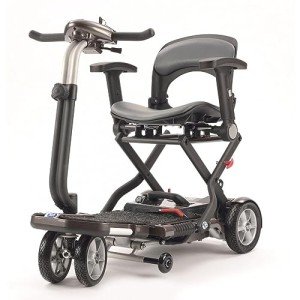Understanding Mobility Devices: Enhancing Independence and Quality of Life
In today's hectic world, the desire for mobility is universal. Nevertheless, certain medical conditions or age-related difficulties can prevent movement, resulting in an ongoing look for support. Mobility devices act as vital tools to enhance independence, improve lifestyle, and allow individuals to engage fully in their neighborhoods. This short article provides a detailed overview of mobility devices, including their types, features, selection requirements, and more.
Kinds Of Mobility Devices
Mobility devices vary from easy aids to intricate devices, customized to fulfill numerous needs. Below is a table summing up typical types of mobility devices:
| Type of Device | Description | Ideal For |
|---|---|---|
| Walkers | Four-legged support devices that provide superior stability while walking. | People needing extra support. |
| Walking canes | Single or three-legged sticks that enhance balance and assistance walking. | Those with slight mobility difficulties. |
| Wheelchairs | Seats installed on wheels, available in handbook and electric variations. | Individuals with limited or no mobility. |
| Scooters | Electric vehicles developed for outside usage and ease of navigation. | Those who can't walk fars away. |
| Crutches | Devices that assist individuals move weight away from an injured leg. | People recovering from leg injuries. |
| Rollators | Walkers with wheels, seats, and brakes for enhanced mobility. | Users requiring rest alternatives while walking. |
| Raise Chairs | Reclining chairs that assist users in standing up and sitting down. | Seniors or those with mobility restraints. |
| Mobility Scooters | Small electric lorries for minimal mobility, frequently utilized outdoors. | Individuals requiring support over fars away. |
Key Features of Mobility Devices
When choosing a mobility device, a number of key features need to be thought about to ensure ideal functionality and ease of usage:
- Weight Capacity: Understanding the device's weight limitation is crucial for safety and effectiveness.
- Adjustability: Devices ought to be adjustable in height and width to fit the user comfortably.
- Mobility: Lightweight and foldable alternatives are essential for users who travel or require transport.
- Stability and Safety: Look for functions like anti-tip wheels and sturdy structures to boost security.
- Alleviate of Use: Simple mechanisms and user-friendly styles can make a substantial difference in day-to-day use.
- Comfort: Ergonomic styles and cushioned seats can enhance the user experience.
Picking the Right Mobility Device
Choosing the ideal mobility gadget can be a daunting task. Here are some steps to assist the decision-making procedure:
- Assess Needs: Evaluate the individual's mobility difficulties and everyday activities.
- Seek advice from a Professional: Engage healthcare professionals who can provide suggestions based on the person's physical condition.
- Trial Options: If possible, trial various devices to identify convenience and functionality.
- Evaluation Budget: Consider the expense of the gadget, including any additional features or adjustments required.
- Research study Options: Determine the best brand names and models by reading reviews and comparisons.
Table: Comparative Analysis of Popular Mobility Devices
| Device | Benefits | Downsides |
|---|---|---|
| Walkers | Outstanding stability, promotes strolling. | Bulky, may limit motion in small areas. |
| Walking sticks | Lightweight, boosts balance. | Might not provide adequate assistance for serious mobility problems. |
| Wheelchairs | Perfect for those with significant mobility restrictions. | Can be cumbersome, especially in indoor environments. |
| Scooters | Great for outside usage, simple to maneuver. | Limited indoor usability, heavier. |
| Rollators | Provides rest alternative, simple to move. | May require more space than traditional walkers. |
| Raise Chairs | Comfy, assists transition from sitting to standing. | More pricey, bigger footprint. |
Regularly Asked Questions (FAQs)
1. What is a mobility gadget?
A mobility gadget is any tool designed to help people in moving and navigating their environment. This consists of walkers, wheelchairs, scooters, and crutches.
2. How do I understand which mobility gadget is best for me?
Consider your specific mobility difficulties, physical capabilities, and way of life needs. Consulting with health care professionals can also offer customized suggestions.
3. Are mobility devices covered by insurance coverage?
Many insurance coverage strategies, including Medicare, might cover specific mobility devices. It's essential to talk to your insurance coverage supplier for particular protection information.
4. Can I rent a mobility device instead of buying one?
Yes, lots of medical supply stores and pharmacies provide leasings for mobility devices. Rhett Embt is helpful for people with momentary mobility problems.
5. How can I preserve my mobility gadget?
Routine upkeep is vital. It consists of cleaning up the gadget, examining for wear and tear, and ensuring all parts are operating correctly.
The Impact of Mobility Devices on Quality of Life
Mobility devices considerably enhance the quality of life for people with limited mobility. They foster independence, encourage social interaction, and boost access to necessary services and leisure activities.
- Increased Independence: Users can browse their areas, attend events, and engage in pastimes without depending on others.
- Social Engagement: Mobility devices assist in involvement in social events, thereby combating sensations of seclusion.
- Boosted Safety: Devices offer stability and minimize the risk of falls, promoting user self-confidence.
Mobility devices are more than just tools for motion; they are entrances to independence and quality living. By understanding the different types of mobility aids available, their key features, and considerations for selecting the best gadget, people can make educated decisions about their mobility needs. Ultimately, the best mobility gadget can cause a more active, fulfilling life. Whether it's a walker, wheelchair, or scooter, the right option contributes significantly to boosting the mobility and self-reliance of users.

